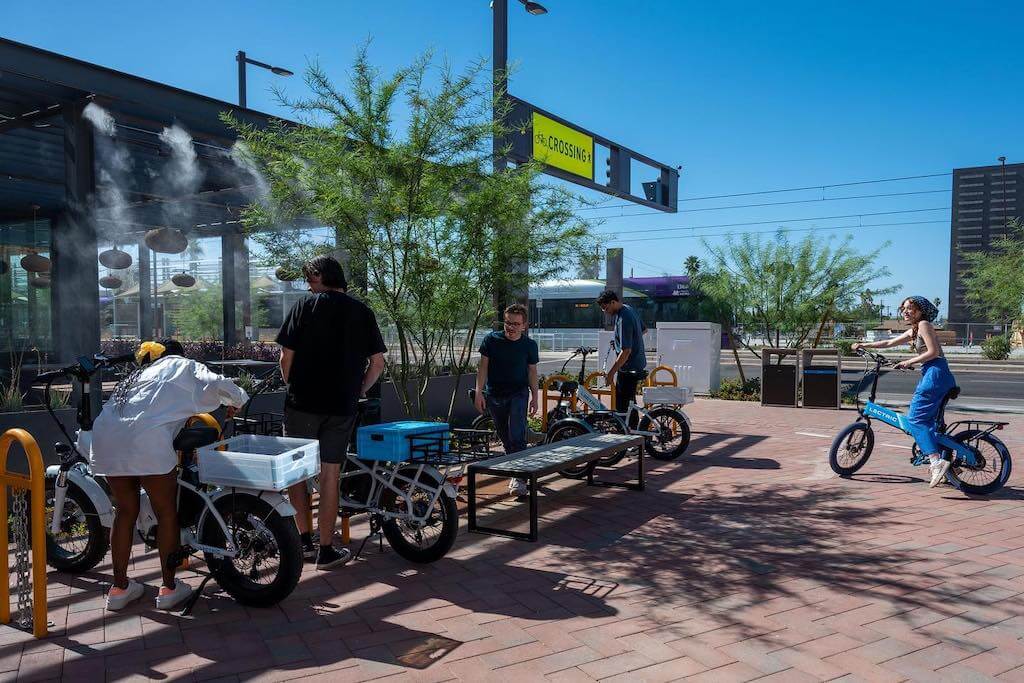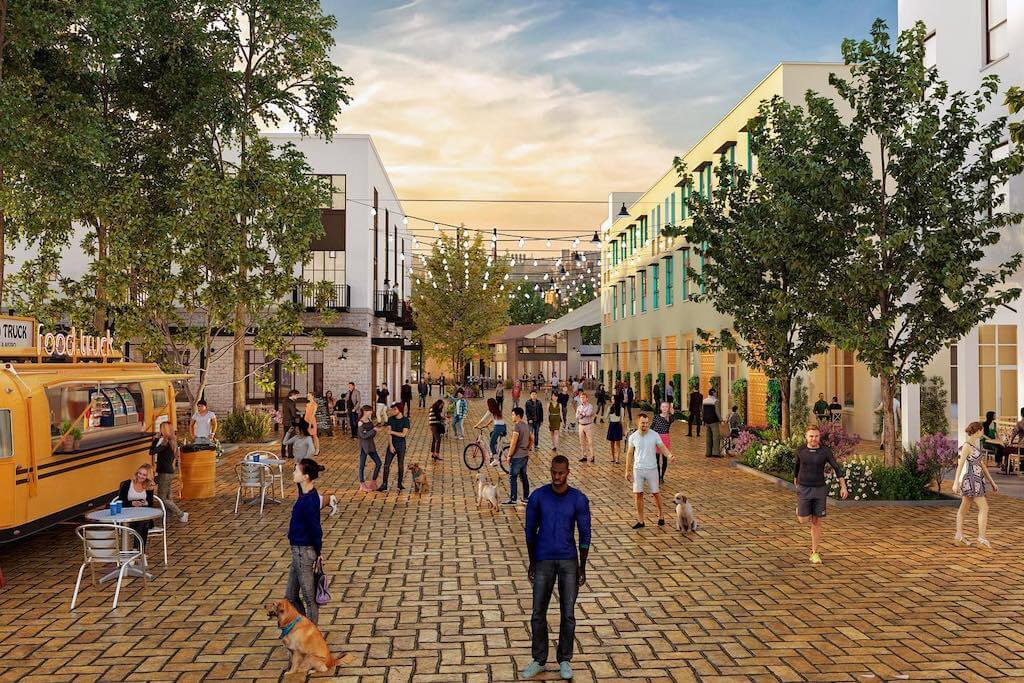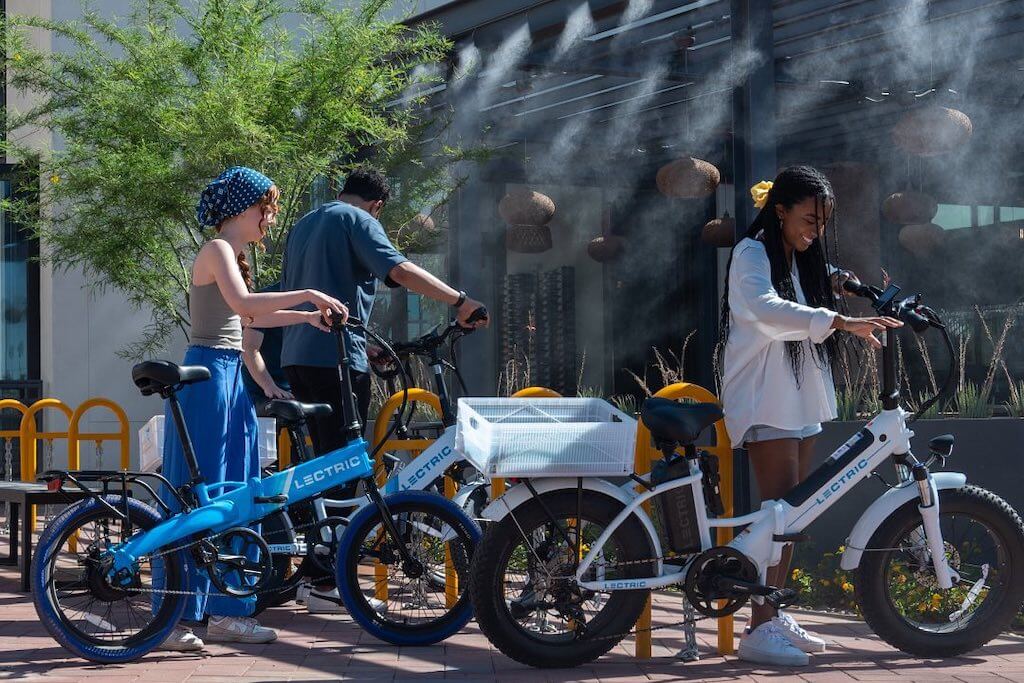Autumn Gear Guide
Find inspiration in our Gear Guide that will keep you out on your bike through wind or rain.
Download NowCuldesac almost looks too good to be true. The whitewashed low-rises. The shaded walkways. The balconies overlook rows of trees. Watch the promotional videos and you might suspect some kind of AI trickery. Are those really smiling e-bikers rolling down the brick tiles? Are those real original murals painted on the walls? Is that upscale […]
Culdesac almost looks too good to be true. The whitewashed low-rises. The shaded walkways. The balconies overlook rows of trees. Watch the promotional videos and you might suspect some kind of AI trickery. Are those really smiling e-bikers rolling down the brick tiles? Are those real original murals painted on the walls? Is that upscale Mexican restaurant, showcasing authentic Chihuahuan cuisine, just a one-minute walk from any given apartment?
But it’s real. Culdesac, a mixed-use development in Tempe, Arizona, is billed as the “first car-free neighborhood built from scratch in the U.S.” You can functionally live here without a motor vehicle. In fact, residents aren’t even allowed to park a car within a mile of the 17-acre property.

“The demand for walkable neighborhoods is huge,” said Blythe Ingwersen, Culdesac’s head of marketing, during a Zoom call earlier this year. “I don’t think there’s one demographic you could nail down. [Culdesac] should open the door to future opportunities.”
Cofounded by Arizona natives Ryan Johnson and Jeff Berens, Culdesac is a concerted effort to transform a windswept desert lot into the portrait of a 15-minute city. The company has partnered with Bird scooters and the car-sharing network Envoy. They gave free Lectric e-bikes to the first 200 residents to sign a lease. The property even abuts a light rail stop. Instead of a parking garage, visitors can use any of the 1,000 bike-parking spaces.

The Phoenix area may seem like an odd choice for a car-free neighborhood, given the city’s reputation for epic highways and low-density sprawl. But Maricopa County has become a testing ground for many thoughtful experiments in urban infrastructure: The 45-kilometer light rail system connects Sky Harbor International Airport to several major municipalities. The valley-spanning canal trails connect to a growing network of bike lanes. Lectric is headquartered in Phoenix and State Bicycle Co. in Tempe. With the exception of high summer, urban Arizona offers a magical climate for human-powered commuting.
“The city of Tempe has been just a great partner for us,” adds Ingwersen. “For a lot of these types of zoning regulations we’ve been requesting, the city has been great.”

Culdesac is expected to expand in three phases, with Phase 1 scheduled for completion this year. The property already has its own grocery store and local hangout, Cocina Chiwas. Phase 2 should include more wraparound structures, or “pods,” along with a communal pool. These residences will integrate with wide walkways, colorful plazas, and retail units.
While nothing official has been announced about sequel projects in other cities, Culdesac’s “about” section reads: “We build neighborhoods [plural] that embrace community, open space, and mobility.” If the Tempe premiere is successful, it’s easy to imagine that others could follow.
To learn more about Culdesac, visit culdesac.com
Find inspiration in our Gear Guide that will keep you out on your bike through wind or rain.
Download Now
Leave a comment